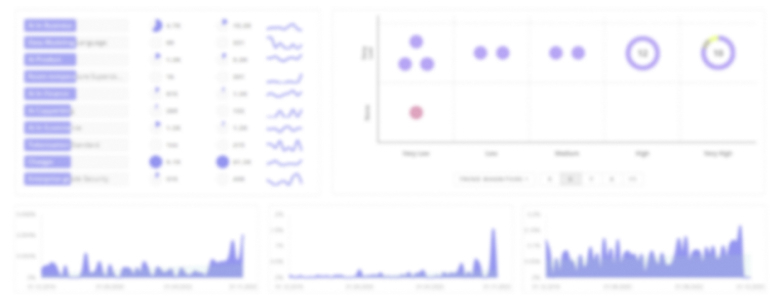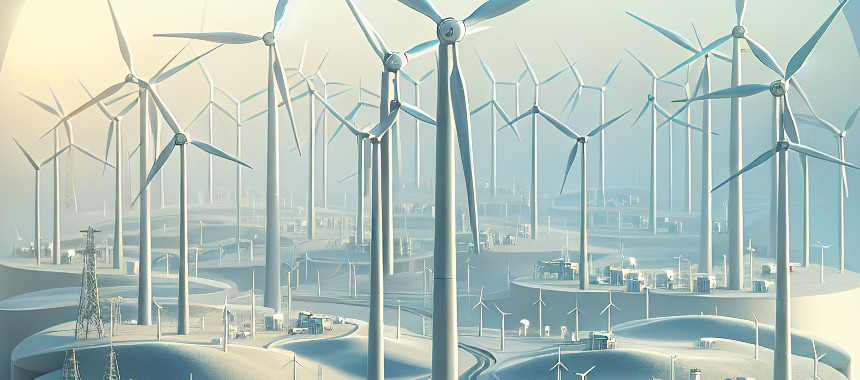
Offshore Wind Energy Report
: Analysis on the Market, Trends, and TechnologiesThe offshore wind sector sits at a strategic inflection point: investment and technology adoption accelerate while project complexity rises, with the internal data reporting a 2023 market size of USD 43.6 billion and a projected CAGR of 19.0 percent for the topic. Global installed capacity reached record levels in 2024 (≃83 GW), and multi-hundred-gigawatt scenarios to 2034–2035 appear plausible given strong pipeline figures and policy support. The practical implication: companies that integrate floating platforms, storage or hydrogen co-location, and high-capacity transmission into bankable project models will capture outsized value as deployment moves into deeper water and new geographies.
The last time we updated this report was 26 days ago. If there’s something missing or off, your tips are welcome!
Topic Dominance Index of Offshore Wind Energy
The Dominance Index for Offshore Wind Energy merges timelines of published articles, newly founded companies, and global search data to provide a comprehensive perspective into the topic.
Key Activities and Applications
Utility-scale electricity generation from fixed-bottom and floating arrays, now the primary revenue driver for large developers and utilities Offshore Wind Market Report | Department of Energy.
So what: scale projects (100+ MW) anchor developer economics and determine supply-chain and vessel demand.Floating wind development and deployment in deep water (>60–150+ m), using semi-submersible, spar, and tension-leg concepts to access higher wind resource areas.
So what: unlocking deep sites expands the technical resource base and shifts CAPEX/OPEX mix toward mooring and vessel services.Hybrid offshore hubs that co-locate wind with hydrogen electrolysis, storage, or aquaculture to increase project revenue streams and grid services.
So what: asset-level diversification creates new offtake structures and makes remote projects bankable.Transmission and meshed offshore grids (HVDC and multi-terminal DC) to move large volumes of power long distances with constrained losses.
So what: projects without coordinated transmission face curtailment and financing risk; grid planning becomes a commercial determinant.Operations, maintenance, and digital asset performance (digital twins, AI forecasting, condition monitoring) to reduce downtime and extend turbine life.
So what: O&M and analytics convert installed capacity into reliable revenue; they form a high-margin services layer.
Emergent Trends and Core Insights
Rapid capacity and market expansion with divergent forecasts: installed base passed ~83 GW (2024) and multi-hundred-GW build-outs are forecast through 2034–2035, but absolute market valuations differ across studies, signaling model and scope differences (capacity vs revenue, fixed vs floating) Offshore wind installed capacity reaches 83 GW.
So what: strategic planning must use scenario ranges and specify whether numbers refer to GW, revenue, or addressable submarkets.Deep-water and floating momentum: patent activity and project pipelines emphasize floating substructures and associated mooring/anchoring systems, making previously inaccessible zones commercially reachable World - Offshore Wind Farm Projects, 15th Edition.
So what: supply-chain winners will be those that industrialize floater production, mooring, and tow/installation logistics.Energy system integration and storage at source: patents and project designs increasingly embed electrochemical or electromagnetic storage within foundations and propose direct hydrogen production at sea.
So what: on-site buffering improves dispatchability and creates merchant revenue opportunities in markets with flexible offtake.Industrialization pressures: larger turbines (≥12–15 MW and beyond) and modular construction reduce per-MW installation costs but increase demand for large cranes, specialized vessels, and local manufacturing hubs.
So what: vessel and fabrication bottlenecks can become the next constraint on deployment; investors should evaluate shipyards and heavy-lift availability.Geographic shift of innovation and manufacturing toward Asia (notably China), while Europe remains a policy and project leader; this shows both competitive concentration and opportunity for supply-chain diversification.
So what: geopolitical risk management and local content policies will shape where components get built and how projects get financed.
Technologies and Methodologies
Large-capacity direct-drive turbines and upscaled rotor systems (12–15+ MW) to raise energy capture per unit and reduce LCOE Fixed Offshore Wind Energy Market Offshore Wind Market size & Trends.
So what: developers selecting higher-rated machines reduce array footprint but require compatible foundations and installation capability.Floating foundation families (spar, semi-submersible, tension-leg) and advanced mooring/anchor systems to support deep-water deployment and tow-in installation methods Floating Offshore Wind | Anchoring the next Generation Offshore.
So what: selection of floater type materially affects CAPEX profile and supply chain partners.HVDC and multi-terminal DC transmission for long-distance export and meshed offshore networks to reduce losses and centralize export infrastructure.
So what: transmission models will determine project bankability and value of coordinated developer consortia.Embedded and modular energy storage (electrochemical, electromagnetic, compressed air) integrated in foundations or platforms to smooth output and provide ancillary services Offshore Wind Market Report: 2024 Edition - Publications.
So what: storage enables merchant strategies (energy arbitrage, grid services) and facilitates hydrogen production.Digital operations: AI forecasting, digital twins, and predictive maintenance tools that reduce downtime and O&M costs, improving asset yields and prolonging component lifetimes.
So what: digital layers create high-margin business models and a defensible data asset for operators.
Offshore Wind Energy Funding
A total of 640 Offshore Wind Energy companies have received funding.
Overall, Offshore Wind Energy companies have raised $191.3B.
Companies within the Offshore Wind Energy domain have secured capital from 2.1K funding rounds.
The chart shows the funding trendline of Offshore Wind Energy companies over the last 5 years
Offshore Wind Energy Companies
Pentland Floating Wind — A specialized developer and testing operator for floating wind concepts in high-energy Scottish waters, concentrating on semi-submersible and modular floater designs; cited among focused floating-wind actors in the internal data.
Why it matters: practical floater pilots validate tow-and-install methods and reduce technical risk for larger rollouts.Flotation Energy — A project developer that targets large floating arrays and integrated hub concepts, coupling offshore wind with grid interconnection planning; mentioned in thematic company listings and project event summaries.
Why it matters: developer capability to coordinate transmission and offtake is a scarce capacity in deep-water projects.Tugdock — Developer of modular floating drydock platforms for offshore construction and maintenance, recently noted as receiving targeted funding for platform development; appears in offshore energy technology listings.
Why it matters: modular drydock systems reduce vessel time and support repeated, lower-cost exchange/repair operations for floater fleets.Haventus — A UK-focused company providing engineering, project management and port-based fabrication services for offshore wind, recently securing a substantial credit facility to scale port infrastructure for assembly and staging.
Why it matters: port and fabrication investments shorten logistics chains and improve national content compliance for large projects.
(Each company description references the internal topic data summarizing company activity and niche positioning.)
Delve into the corporate landscape of Offshore Wind Energy with TrendFeedr’s Companies tool
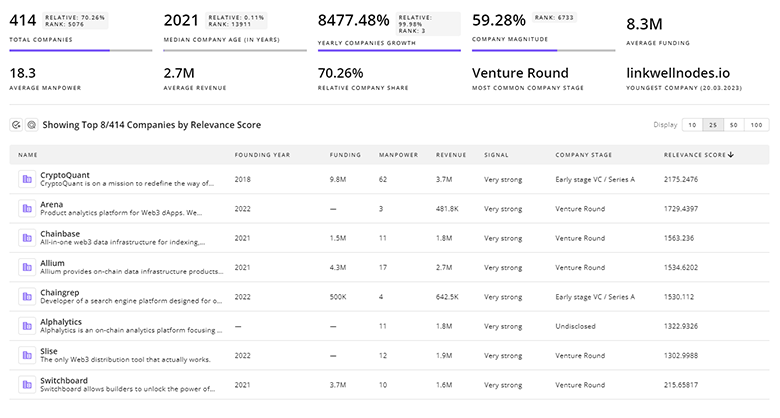
4.8K Offshore Wind Energy Companies
Discover Offshore Wind Energy Companies, their Funding, Manpower, Revenues, Stages, and much more
Offshore Wind Energy Investors
TrendFeedr’s Investors tool provides insights into 1.8K Offshore Wind Energy investors for you to keep ahead of the curve. This resource is critical for analyzing investment activities, funding trends, and market potential within the Offshore Wind Energy industry.
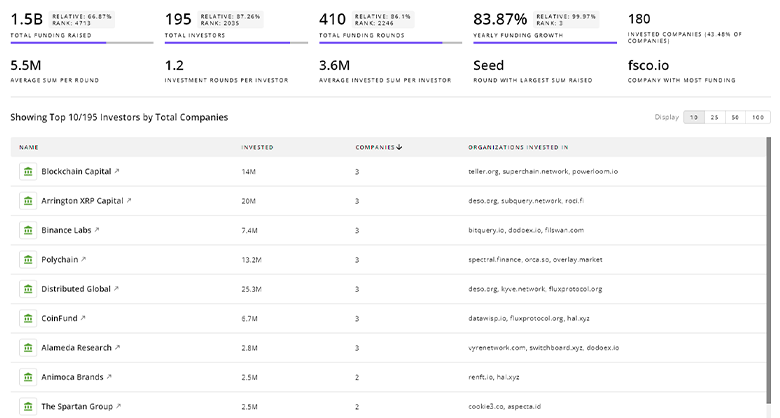
1.8K Offshore Wind Energy Investors
Discover Offshore Wind Energy Investors, Funding Rounds, Invested Amounts, and Funding Growth
Offshore Wind Energy News
TrendFeedr’s News feature offers you access to 56.6K articles on Offshore Wind Energy. Stay informed about the latest trends, technologies, and market shifts to enhance your strategic planning and decision-making.
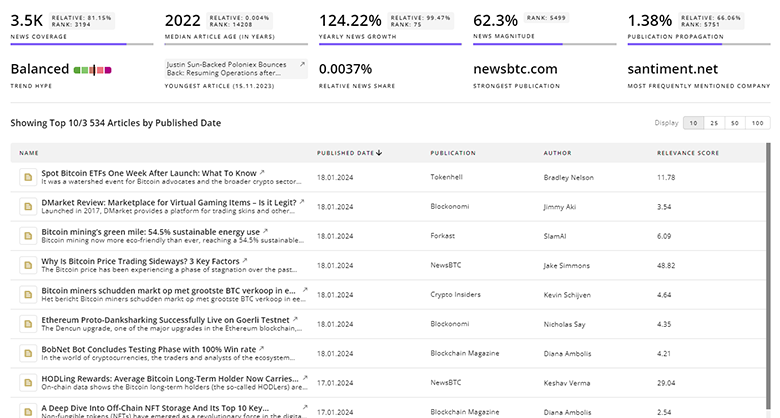
56.6K Offshore Wind Energy News Articles
Discover Latest Offshore Wind Energy Articles, News Magnitude, Publication Propagation, Yearly Growth, and Strongest Publications
Executive Summary
Offshore wind stands as a capital-intensive but maturing industrial sector where technology choices and project structures determine winners. The most immediate commercial opportunities sit at the intersection of floating foundations, integrated storage/hydrogen value chains, and coordinated transmission—areas that convert resource potential into bankable projects. Investors and operators should prioritize three capabilities: (1) mastery of floater supply and installation logistics, (2) integration of energy-management solutions (storage/hydrogen and digital O&M) to raise effective capacity value, and (3) engagement in transmission planning or consortiums to avoid stranded assets. Firms that combine these capabilities with pragmatic, region-specific manufacturing and vessel strategies will best translate the projected multi-billion market expansion into durable returns.
Are you an insider in the trends or tech industry? We’d love for you to contribute to our content.
